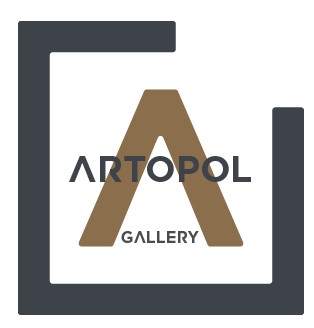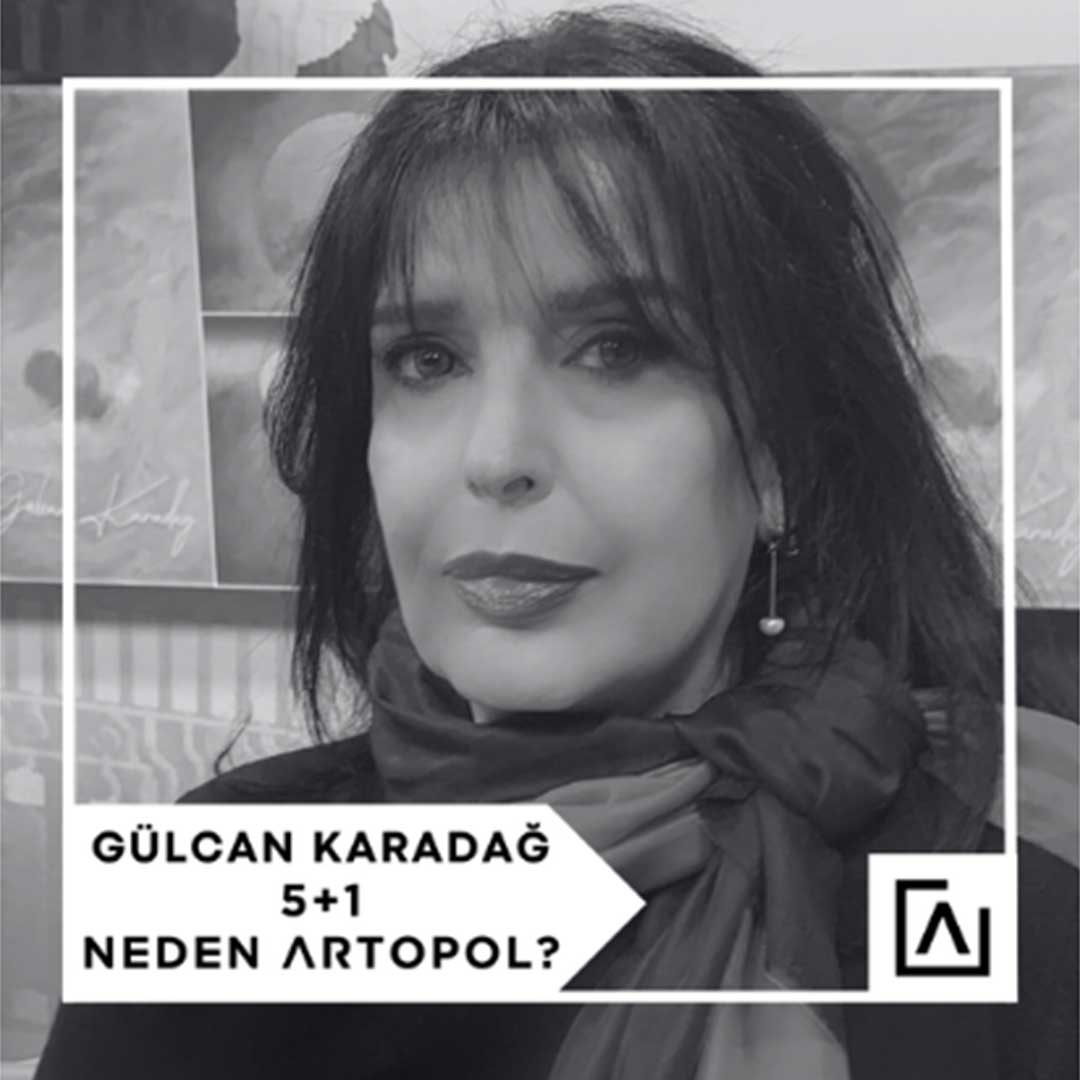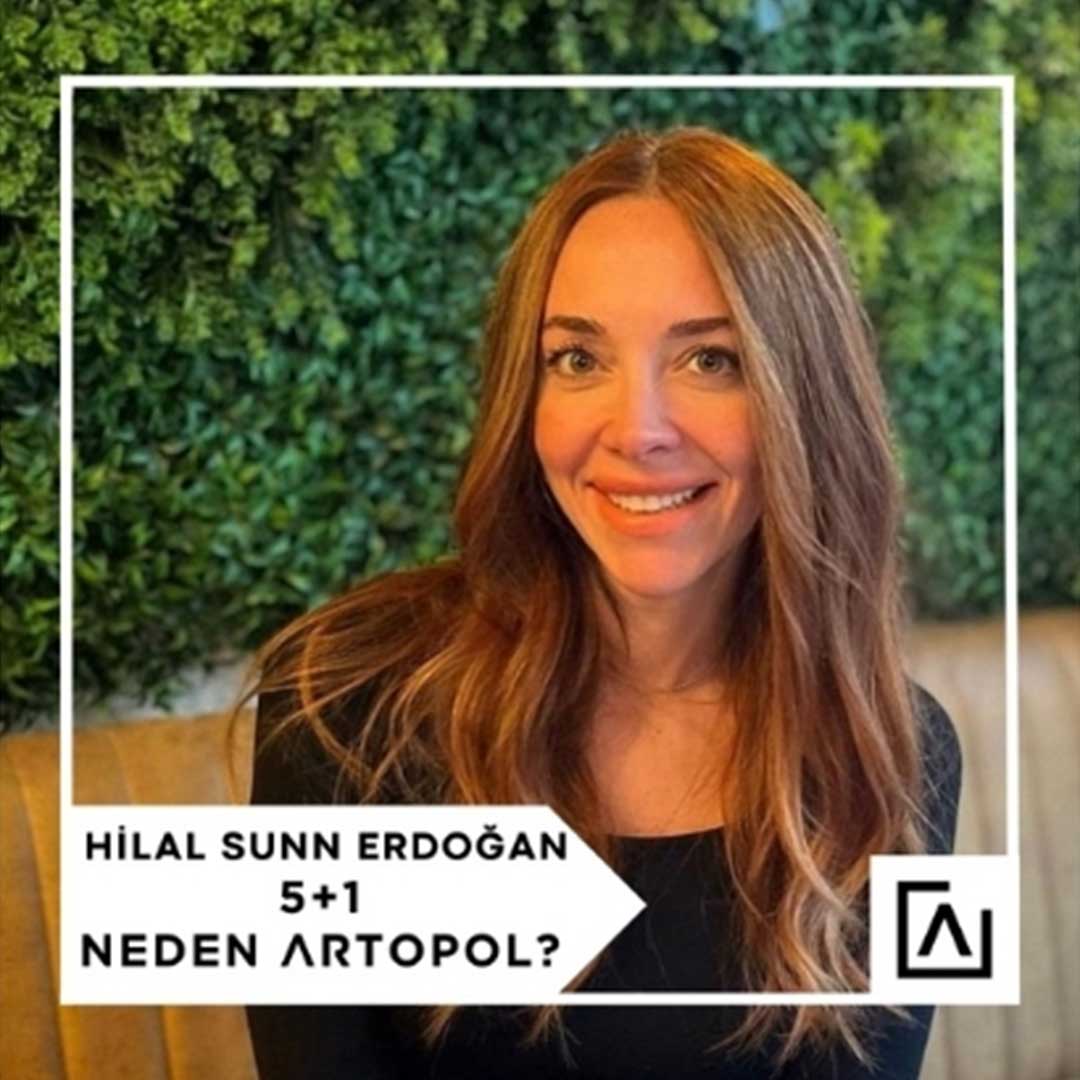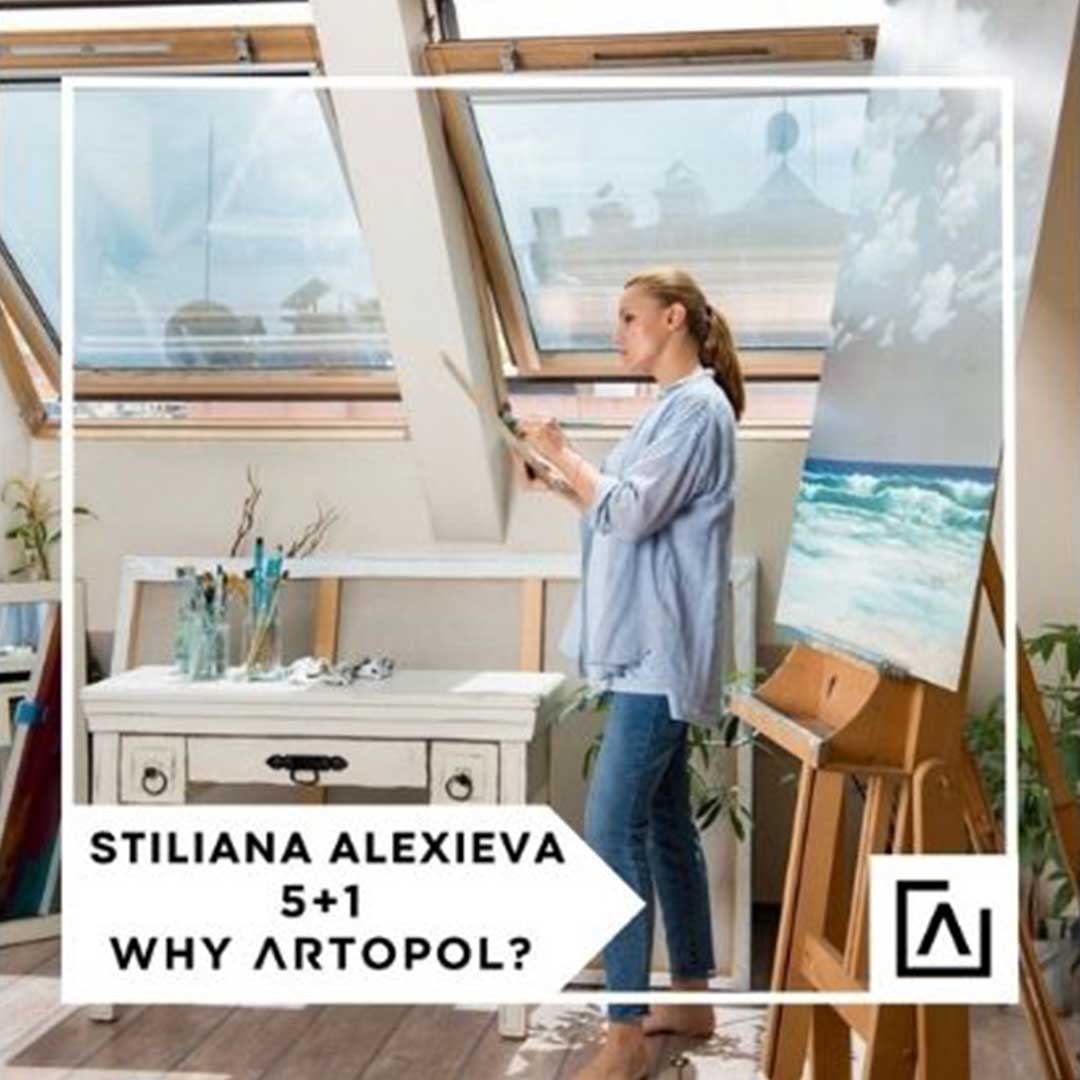Artopol Gallery: Why Artopol?
Ece Gauer: For me, the fact that artists of different styles come together is an important factor. I’m already an artist who works in different fields. I produce works in many disciplines. For example, thanks to my background in fashion design, I also design clothes and shoes. My main discipline is painting, but I also create mosaics, frescoes, and illustrations. I might even work on sculptures one day. As a versatile artist, it was important for me to see that Artopol and I share a similar direction. It’s an institution with carefully selected works from every field. On the other hand, being able to feel like a family is also very nice.
AG: In your opinion, what are the right steps for continuity and permanence in the art market?
EG: There should be a quality art environment. There must be transparency between the buyer, the gallery, and the artist. The artist must not compromise their stance or artistic line. An artist must have a unique style and remain consistent. The gallery should not overshadow the artist but represent them in the best way possible — both materially and spiritually. The artist should only create and focus on their art. The marketing, sales, and recognition of the artist should be the gallery’s job. In this way, it becomes a reliable teamwork process. So, as long as everyone fulfills their responsibilities correctly and transparently, a quality and lasting art market can be created.
AG: How do you view accessibility in art? What are your thoughts about the internet’s role in this?
EG: I find accessibility very important. It has many aspects. For example, once I went to a museum in Copenhagen. I really admire Cecily Brown, and I had the opportunity to see her works in person — abstract figurative works. Now, it’s obviously impossible for me to go and buy one of her works. Buying a poster of her work would never create the same effect either. Instead, buying a small but genuine piece of art feels much more meaningful. It’s important both as an investment and because an original work can never be replaced by a print.
AG: So, it’s about reaching art itself, not just the artwork?
EG: Exactly. Continuing from the poster example or if we talk about mass-produced works — after a while, you throw them away, get bored, and replace them. But when it comes to an artwork, it’s different. You don’t throw it away — it’s not garbage. If you want to change it, you can pass it on; the right artwork changes hands. But for that, you need to know the artist — look at their background, their exhibitions. Social media made this possible.
We especially saw the benefits of the digital world during the pandemic. Many people reached out to me and showed interest in my works. We gain visibility through social media, and we can also see others. From a gallery perspective, we saw how important the online world is and how dynamic it can be. But above all, we became open to the whole world — accessible from everywhere.
For me, being accessible means that my works can exist in everyone’s homes.
AG: Do you think this also strengthened the audience’s connection with the artwork?
EG: It definitely had a positive effect in terms of increasing the recognition of artworks, but seeing them physically is something else entirely. For instance, my works are textured; they look different in photographs. That’s one of the limitations of transferring paintings into digital form. The smell, the texture, and the shine of oil paint are, of course, completely different. Experiencing a work in a physical space is also unique. Someone might think, “Is this really worth that price?” when they see it online, but seeing it in person gives a completely different impact — especially with large-scale works.
And then there’s the artist’s background. It’s often overlooked, but a collector should really look into an artist’s résumé — what brought them to their current position, what matured them. The bond between the artist and the audience is important. This allows the work to be read with awareness, and thus, the artwork gives meaning to the viewer. Because when a collector buys an artwork and hangs it in their home, they are actually including a piece of the artist’s life in their own. Knowing a bit about the artist’s life adds more meaning to the work.
Of course, the audience’s knowledge of art also plays a role. The interaction between the artwork and the audience depends on the viewer’s intellectual background. That’s why informed, curious, and conscious viewers come to the forefront.
AG: You seem sensitive about the viewer/collector relationship. You care — and it’s quite understandable. Are you influenced by their comments or approaches? For instance, if someone focuses on how your paintings match their couch rather than what they express — how does that make you feel?
EG: Yes, it’s something I care about. After all, proper interpretation of what I create gives it more meaning and enhances its value. But we’ve grown used to such approaches. There are even people who request custom commissions — they send me an image and ask me to reproduce it. In that case, what they want isn’t my art, but the image itself.
Some say I always do the same things, for example. Those are unfortunate comments for the speaker because they reveal a lack of art knowledge in society — but for me, it’s positive, because it shows I have a distinct signature style. My style is my language. During my exhibitions abroad — in Switzerland, Germany, and France — I sold works to collectors there, and the conversations at my shows were completely different. For example, decoration was made around the artwork, not the other way around. Some even said that my paintings brought them healing, that they sipped coffee in front of my work every day and felt transformed. Everyone experiences art according to their own awareness level, of course.

AG: So, who is Ece Gauer?
EG: Gauer is my daughter’s surname. But I’ve been working internationally under this name for many years and signing my works with it. As a woman artist, this is a big issue — your husband’s or father’s surname becomes part of your identity. When your career becomes tied to your name, even if there are changes in your personal life, there are things you can’t easily change. But I chose to see Gauer as an integrative name, because I have many sides. There’s Ece the painter, Ece the artist who makes design products, Ece who designs jackets and kimonos under her “pop up the jean” brand, Ece who creates artistic masks, Ece Ünal who is her father’s daughter, Ece the mother of my daughter, and now Ece the online teacher. Officially, I use my second husband’s surname, Günaçar — under that name, I also have book illustrations. And all of them are me. That’s why my Instagram name “Ece Artist” reflects all these aspects — it unites them. Since I became known internationally as the artist Ece Gauer, that name is now a part of my artistic identity.
AG: So it’s your brand.
EG: Yes, exactly.
AG: Let’s talk about your works a bit. How did your style develop?
EG: I graduated from Mimar Sinan Fine Arts University, Painting Department. We received a classical Western art education there. I graduated first in my class. Then I received a scholarship and went to Munich for Erasmus. My first studio instructor there was Anke Doberauer, but I didn’t want to continue with her, so I switched. I worked with Axel Kasseböhmer for seven years — and that experience deeply affected me. I was working day and night. Every two weeks, you had to present your work to the professor. The studios were open to everyone, so anyone could come. Everyone else brought two or three paintings, but I filled the whole wall to the ceiling. The professor criticized me so harshly — brutally, even — that he embarrassed me in front of everyone. He said, “No Turk can be a painter, all of you just imitate. What’s your history? How many universal artists do you have?” My ego was shattered. I actually trusted my drawing skills — I had worked with Kasım Koçak during summers, and learned color and composition from Mehmet Mahir, the best teacher. Then Kasseböhmer said, “What’s drawing, anyway?” To him, my works were Western imitations. He said, “You haven’t brought anything of your own land or personality into your art!” He asked if I had ever visited Göbeklitepe, for example. He told me I needed to explore my country, learn more, and discover how to truly be an artist. He said I should forget everything I knew — just like Shams throwing Rumi’s books into the pool.
AG: So, he reminded you of your own culture.
EG: Exactly. At first, it was hard. He said, “If I don’t push you hard now, you won’t survive later. The art world is full of galleries and dealers — you’ll be all alone!” And he was right. It required persistence and patience. He made me realize that if I drew from my own culture, I could create sincere and original works. He encouraged me to stop imitating and start discovering my essence, to tell my own stories.
After that criticism, I painted a work of a woman in a dress full of symbols, set against a dark atmosphere, with a transparent veil covering her face. He said very little, but he said, “This is it! This is the way you should continue.” And that’s how I began to find my own path.
The symbols I use are from these lands — sacred geometry, Islamic motifs, Byzantine patterns, Andalusian architectural elements. They might seem like multilayered and complex compositions, but that’s exactly like our culture — layered yet harmonious within chaos. That’s what I’m after; that’s my essence. I took what I needed from Western art and from my own culture — now I synthesize them in my work. We should highlight the value of these lands in our art. After all, Western artists already make Western art.
AG: Do your works have stories?
EG: My paintings have changed a lot — but all those changes parallel my life. For instance, when my marriage ended in Germany, there was a time when I was alone with my daughter, trying to both care for her and make a living. During that time, I covered the faces of my figures with veils in my works — things seen and unseen, perhaps a reflection of wanting to hide myself. I saw the figure as indispensable — the human subject was important. Later, I wanted simplicity; I began exploring the abstract side of the figure. I didn’t want to see the person clearly — I wanted to see their essence. I moved away from the figure toward the core, wanting to portray people hidden behind something.
After a while, those veils were lifted.
AG: Where does your inspiration come from?
EG: My inspiration is life itself — what I live, what I read. Life’s difficulties polish you even as they wear you down. But “hope” is very important — like in Dante’s Divine Comedy. That idea always comes to my mind. Such things nourish me. My curiosity toward different directions and sources is my richness. Meeting different people is also my richness.
I look at illumination art, architecture, ceramics. I get inspired by miniatures, philosophy — even the veins in marble on the floor. Being a painter doesn’t mean I only look at paintings.
AG: You often use certain motifs — the sacred geometric ones, as you call them. Can you tell us a bit about them?
EG: I depict symbols, and symbols exist heavily within belief systems — not only in Islam but also in Christianity, Judaism, and even Paganism. They’re all parts of culture. I draw inspiration from cultural motifs — carpets, folkloric elements, spiritual symbols, essence, and traditions. Everything can inspire me. Thankfully, the source is endless.
I believe sacred geometric symbols emit certain energies. The universe is built on geometric order; even the smallest particles have geometric structures. Since I’m intertwined with these ideas, they naturally appear in my paintings.

AG: Should we look for a message in your works?
EG: I don’t paint with a specific message in mind, but that doesn’t mean my works are message-free. I start from the abstract meanings of symbols and colors — so there is something being conveyed. There’s definitely a story behind it. Especially in my abstract works, there’s an abstract concept, but the viewer should discover it themselves. I give my paintings titles so that people can reflect on them — think about why I did what I did. What does the artist eat, read, how do they decorate their home, how do they dress? Of course, all of that reflects in their works.
AG: What is your starting point in creating art? How do you begin a work?
EG: I have sketches, but sometimes I just start spontaneously. Especially large canvases — they’re like my playground. I can be influenced by many things, so I can’t say I have one fixed starting point. Inspiration can come from anywhere — it’s about knowing how to see and observe. It depends on what affects me and where it comes from.
Once, for example, I painted my friend’s coffee fortune because the shapes were so beautiful — phoenixes, roads, mountains. It looked like a miniature. I made a huge painting inspired by that coffee cup, and now it hangs in that collector friend’s home.
AG: There’s a strong connection between your life and your art. Should the viewer stay attached to that connection? Do they have a place in it?
EG: Until the artwork is completed, the artist contributes something of themselves. But once it meets the collector, it belongs to them. So instead of imposing a message, it’s important to consider what the viewer takes from it — what it means to them. I think it’s best to leave it open. As an artist, you express something visually — but what does it evoke in others? That’s why I often ask viewers what my works made them feel. Because there are endless meanings in the universe — I like seeing what emerges for each person.
AG: You’re a multidimensional artist. How’s your relationship with materials? Do you seek variety there too?
EG: Since I work in different areas, I use many materials. I use whatever a painting requires — acrylic, pastels, spray paint, ink, charcoal — I can use them all. Especially in my abstract works, this diversity is even greater. It’s also a result of my highly textural technique. In my figurative works, my playground is different — I don’t want symbols to overshadow the figure, since the figure itself is the most symbolic entity.
For instance, I worked with mosaics — a 3.5-meter one in Riga, for which I received a first-place award. It still stands in the park there. Later, I also worked on fabric. So, I have no boundaries.
AG: What is art, in your opinion?
EG: There are many norms. For example, painting has certain technical requirements — color, drawing, composition. Knowing and applying these doesn’t automatically make someone an artist, but they are necessary. Not everyone can be an artist. Not every painting is an artwork. For me, art is connected to life — my life, my culture. Art happens through combining those with one’s personal essence.
AG: When did you start saying “I’m an artist”?
EG: I’ve been living and breathing art for years — dedicating myself to becoming an artist. I think it’s a process. You don’t suddenly wake up one day and say, “I’m an artist now.” I paint the way I live. Whatever I think or feel comes out in my work. When that happens, yes, you’ve created art — you’ve touched something, made something more beautiful. You develop an artistic eye. To be an artist, you need education — but also the education of the heart and soul. Even I still say I’m a traveler on the path of art. That’s how you see life. If what’s inside you starts reflecting outward and evolving with time, that’s when you become an artist.
AG: Thank you so much for this lovely conversation.
EG: Thank you.
Interview: Zeynep Dikmen



